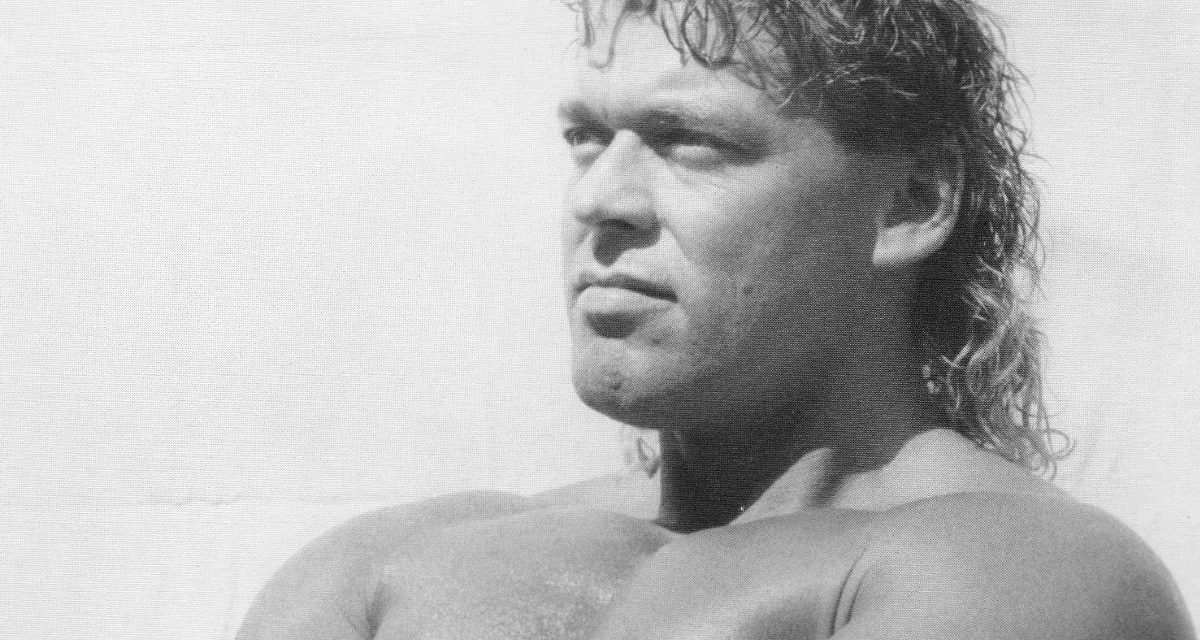Recently, I heard a movie critic on the radio giving his opinion of the latest Sylvester Stallone movie, Rambo. He hated the movie and said it was ridiculous watching a 61-year-old man all juiced up on steroids running around in a jungle war. Amazingly to me, as I thought about it, this was one of the first times that I’ve heard someone in the media come out and casually say the truth about a well known individual’s steroid use while doing their report.
I have to say it was very refreshing.
Before I go further let me say that I used steroids back in the 1980s as a bodybuilder and later as I started wrestling. In bodybuilding circles in that era, steroid use was just accepted as a necessity to compete, but still, nobody openly talked about it. I never really understood that because it was just something that you had to do to be competitive, or at least that was the mind set. Even though you had to buy them in back rooms of legitimate businesses or in the locker rooms at the gym, it was not illegal to possess steroids, which one can assume also means taking them.

Oly Olsen in 1983 at a bodybuilding competition while on steroids. Photos all courtesy Oly Olsen
According to the Drug Enforcement Administration, the Anabolic Steroids Control Act of 1990 placed anabolic steroids into schedule III of the Controlled Substances Act (CSA) as of February 27, 1991. This legislation made it clear that the possession or use of anabolic steroids without a valid prescription is illegal. Trafficking of steroids has been illegal since 1988.

Olsen on steroids, left, in 1986 while competing in All-Star Wrestling; the photo at right, from 1990, is just after coming off steroids.
So steroid use, being in sort of a gray area where you knew something wasn’t right about it, but you also knew that it was accepted in sports in order to be competitive, is now no longer gray, but very clear — it is illegal. This legislation woke some people up such as Vince McMahon of the WWF (now WWE) and they started a drug policy but it didn’t last, largely because some of the “superstars” of the WWF were becoming practically unrecognizable to the fans. Also, it became a way for McMahon to weed out or control wrestlers that he had a problem with. At least, this was the “word in the dressing room” that I heard. At any rate the drug policy was ineffective and discontinued, although they may have pretended to still implement it.
After many untimely deaths, and especially the Chris Benoit tragedy, the WWE has once again taken certain wrestlers to task and required them to get off steroids. It’s not hard to identify who is on their way off the juice, just watch their appearance gradually change. Necks will get thinner, muscles will shrink and definition will disappear. In the past few years, other sports started dealing more with the steroid issue also, but it basically was always swept under the rug by owners of sports teams, sports promoters and organizers of major sports organizations. The subject was rarely talked about by the mainstream media and the sportscasters never talked about it, as if they had a gag order not to. I personally believe they did, and still do, have a gag order.
And then, of course, possibly the most ridiculous display of ignoring the issue came in 1998 as baseball turned a blind eye to the fact that Mark McGwire and Sammy Sosa were heavily juiced when they had their home run battle in which McGwire hit 70 home runs. It wasn’t just the home run totals but it was their appearance for crying out loud. Even the untrained eye should have been able to see the changes in their appearance over the preceding years. It seemed as though almost everyone in sports — and even the fans — were blind in both eyes not to have made this a huge issue. The Major League Baseball world let it go on to give the sport a boost. The WWE and Major League Baseball are just two examples in a long list of sports organizations which include the International Olympic Committee and the organizers of the Tour De France who have allowed the use of steroids and other performance-enhancing drugs to become an epidemic in sports.
I, for one, do not know how long steroids have been used in sports but when I look at photos of strongman/bodybuilding/wrestling athletes of the late 1800s and the early- to mid-1900s such as Eugen Sandow, George Hackenschmidt, and Stanislaus Zbyszko and many others, I can’t help but wonder if steroids played a part in the development of their famous physiques and success in their careers. My trained eye says “yes,” but that is only my opinion.
Regardless if steroid use started 150 years ago, or many centuries ago, it was in the past.
This is the present.

Olsen in 2006 at a reunion ECCW show, off steroids for 16 years.
The governing bodies of all sports organizations need to start in the present. It’s not fair to strip medals and take away titles that were won in the past when the steroid epidemic was in large part allowed to go on in sports by those who had the most to gain from the athlete’s success, namely the owners and leaders of sports organizations. Then, when the heat comes down, they want to make examples of only a few because there is no way of going back and punishing everybody who used steroids. Steroid possession is illegal. Forget about sports organizations policing themselves. While there have been arrests over the past 20 years in the underground steroid world, you rarely see arrests of athletes themselves.
If the Anabolic Steroids Control Act of 1990 and the placement of steroids into schedule III of the Controlled Substances Act is a law, enforce it, starting now, in the present, and forget about the past.
Or, take it off of the books and leave the steroid issue and the athletes alone. Although with the latter, steroid related untimely deaths will continue.
Just think, all of this, and we haven’t even talked about American Gladiators.
OLY OLSEN STORIES
- Nov. 20, 2015: Suzie Tanner: Working out with Oly; BC’s female ref remembers
- Nov. 20, 2015: Dan Denton: B.C.’s wrestling family will miss Oly Olsen’s laughter and his heart
- Nov. 19, 2015: : Todd ‘Oly’ Olsen dead at 58
- June 7, 2007: Tradition still important to Oly Olsen
- Jan. 31, 2006: Returning vets revel in ECCW anniversary
OLY OLSEN COLUMNS
- Aug. 13, 2009: Guest column: Thanks for everything, Al
- Feb. 22, 2009: Public perception of pro wrestling still an issue
Todd “Oly” Olsen wrestled professionally for 15 years.


